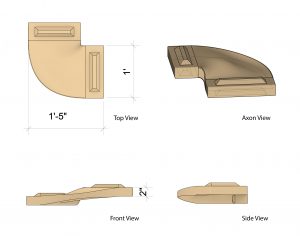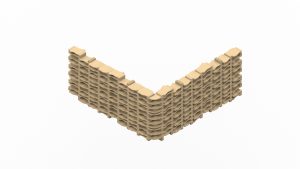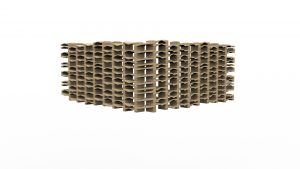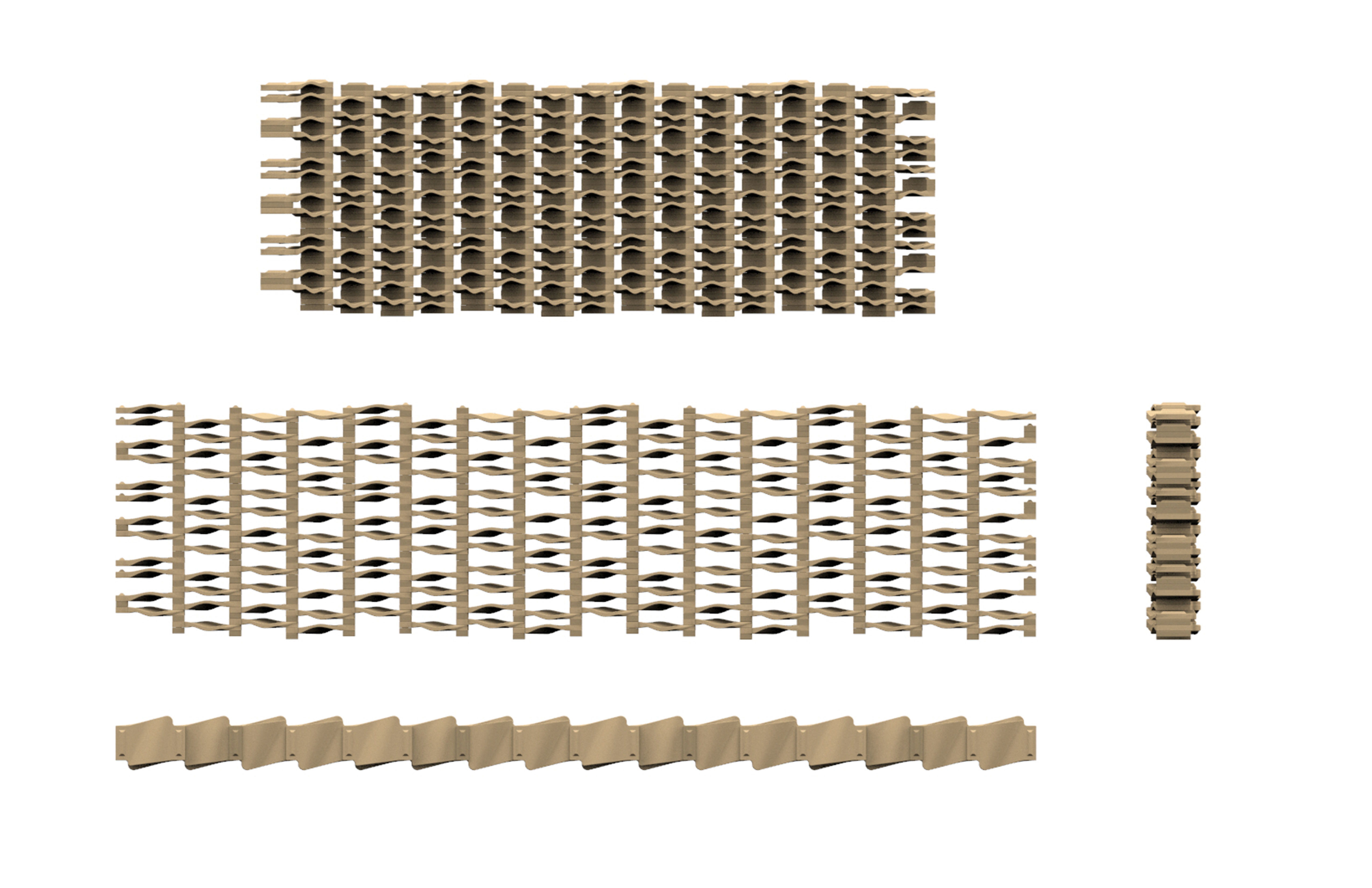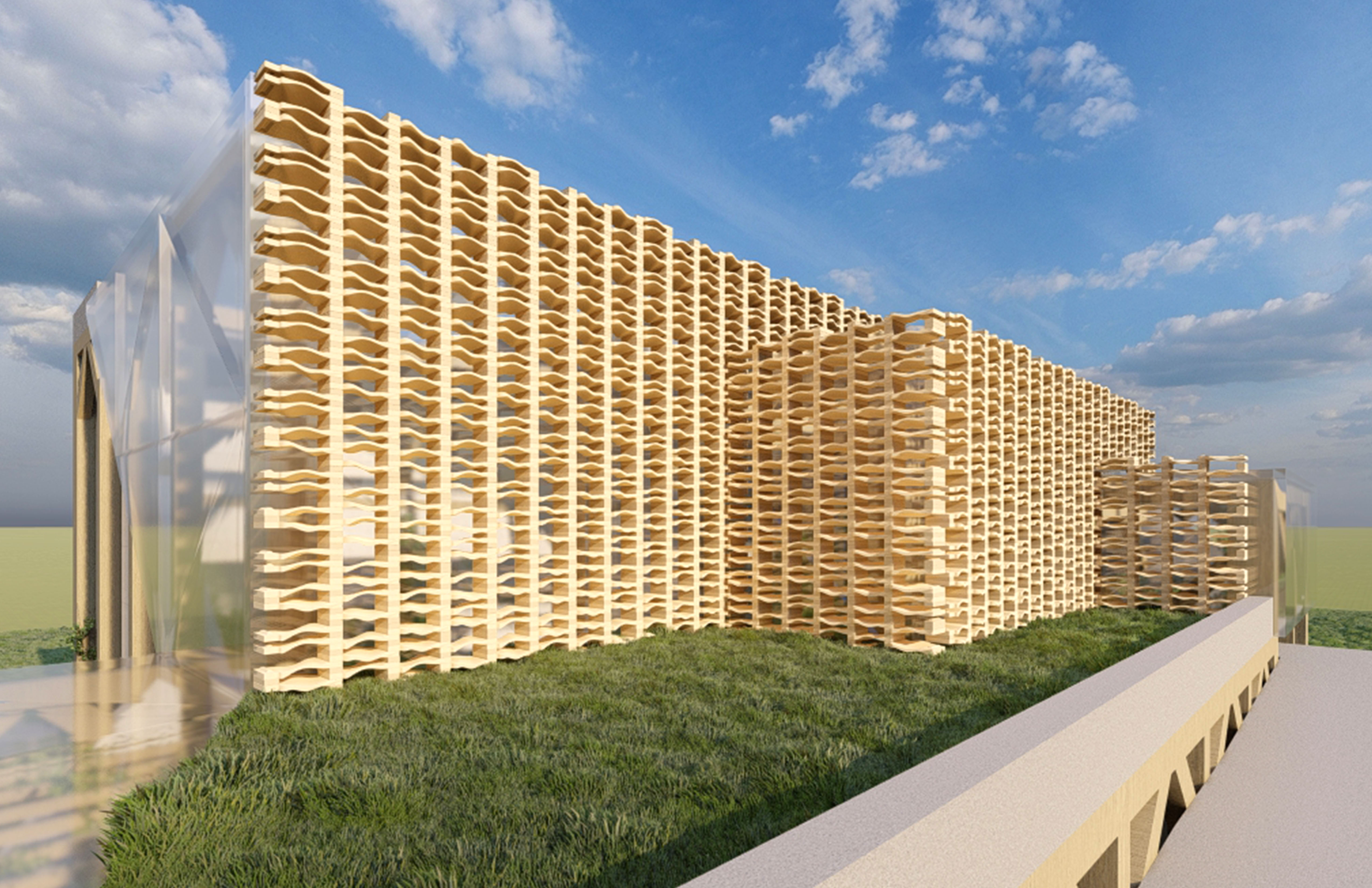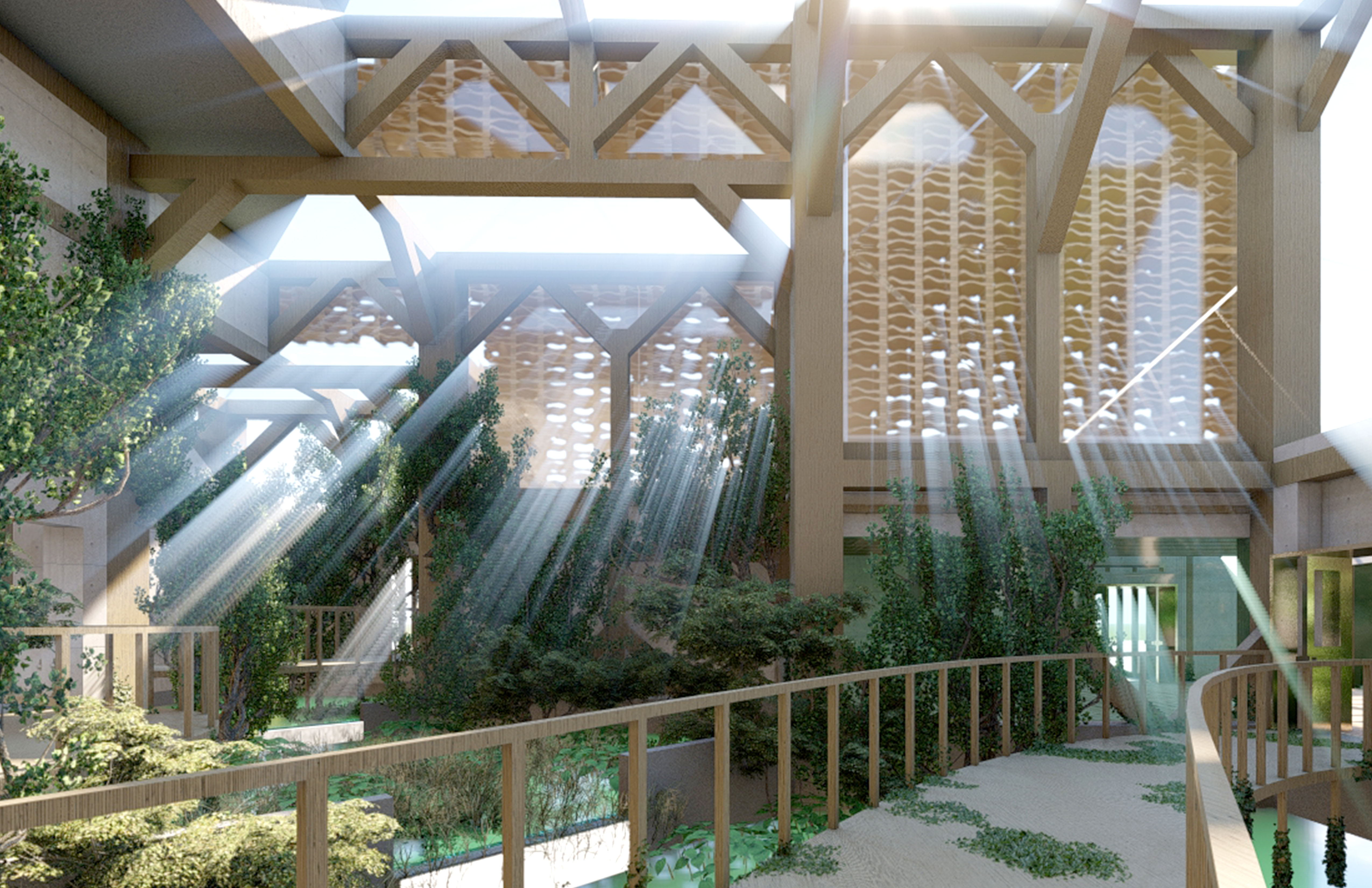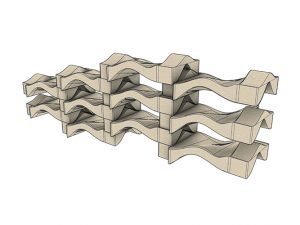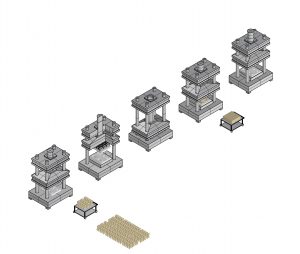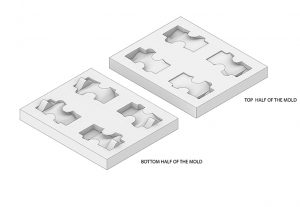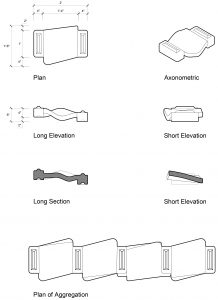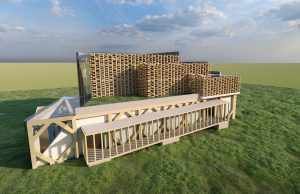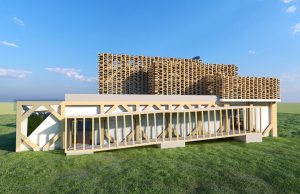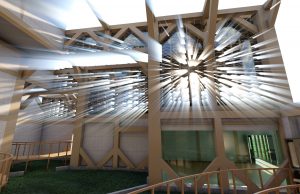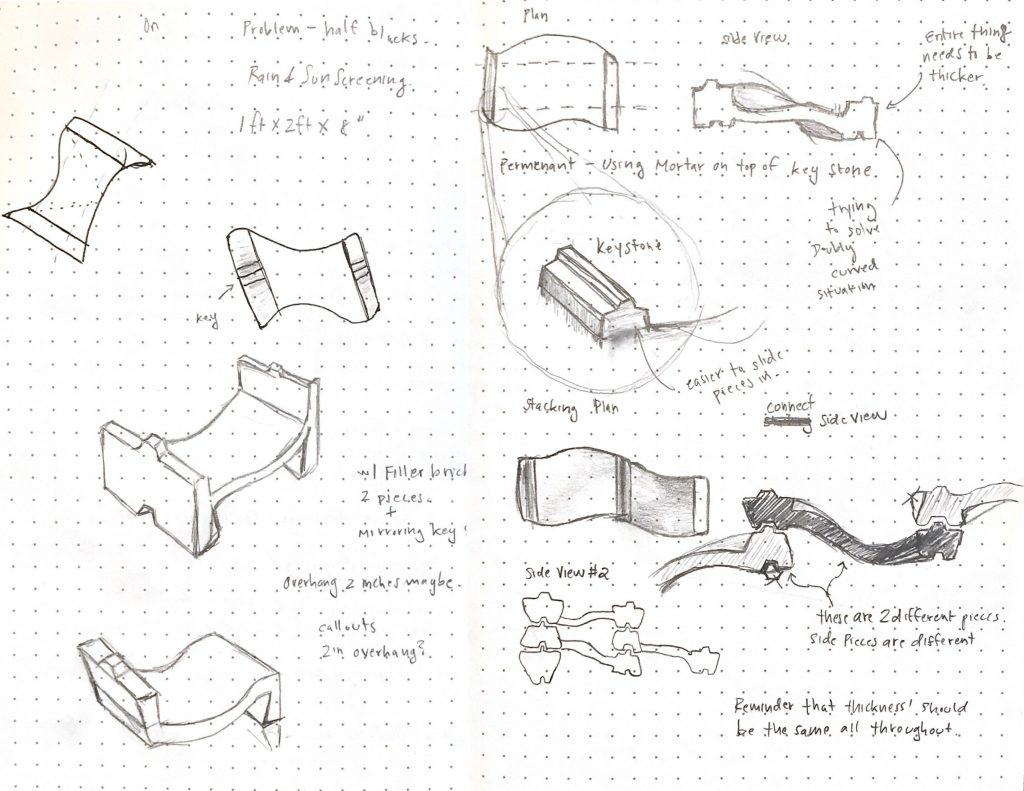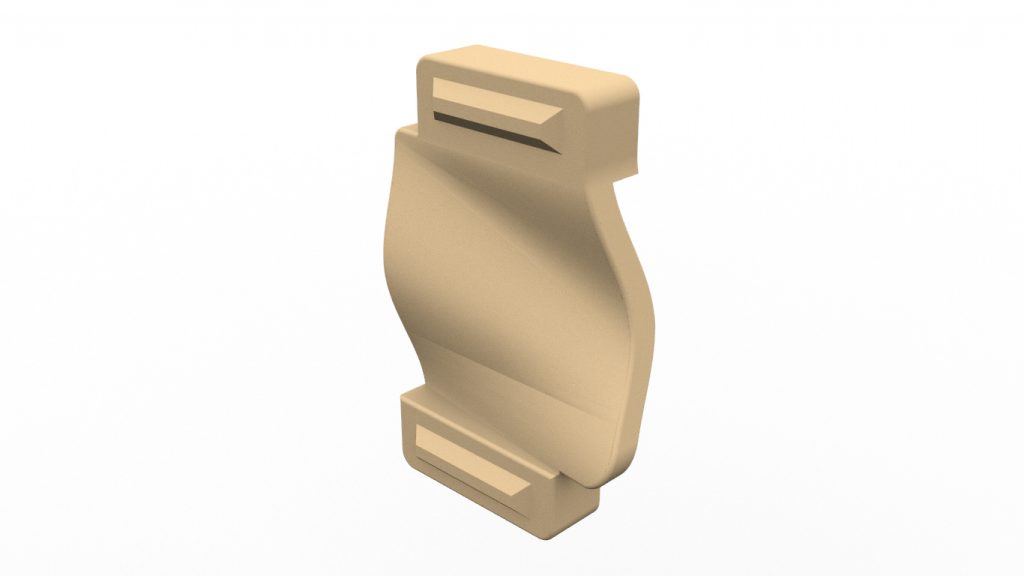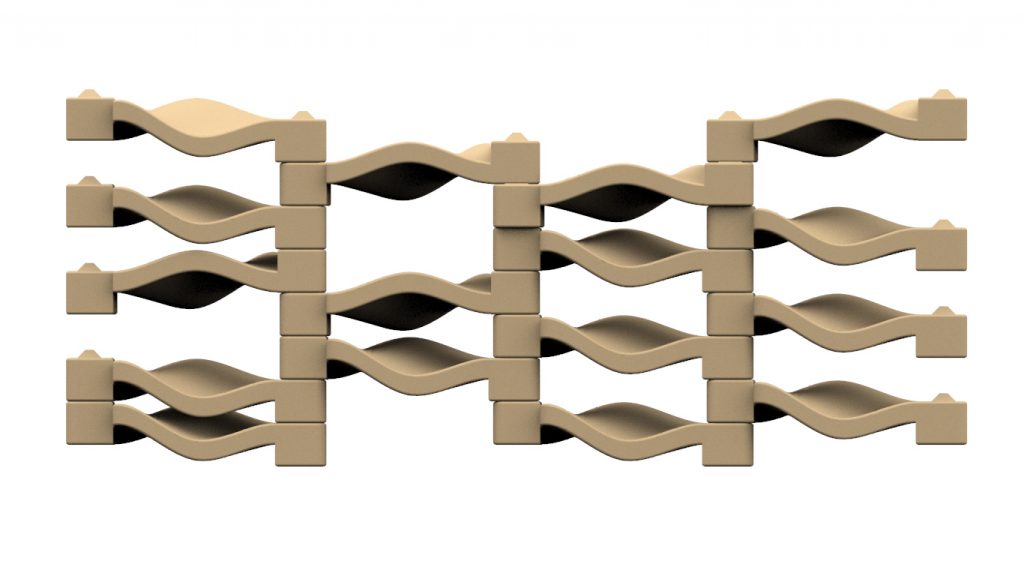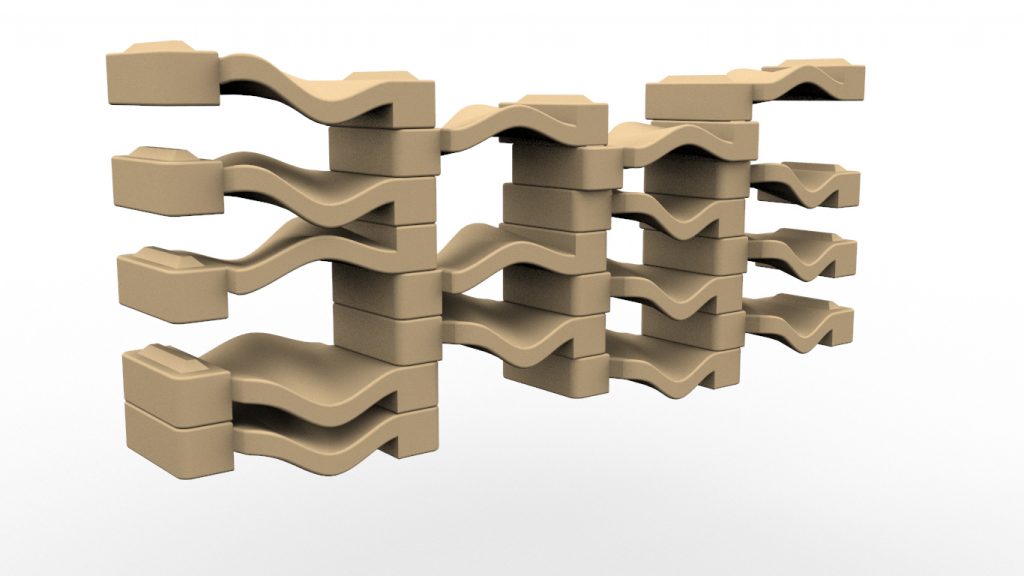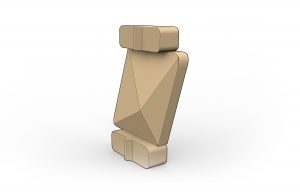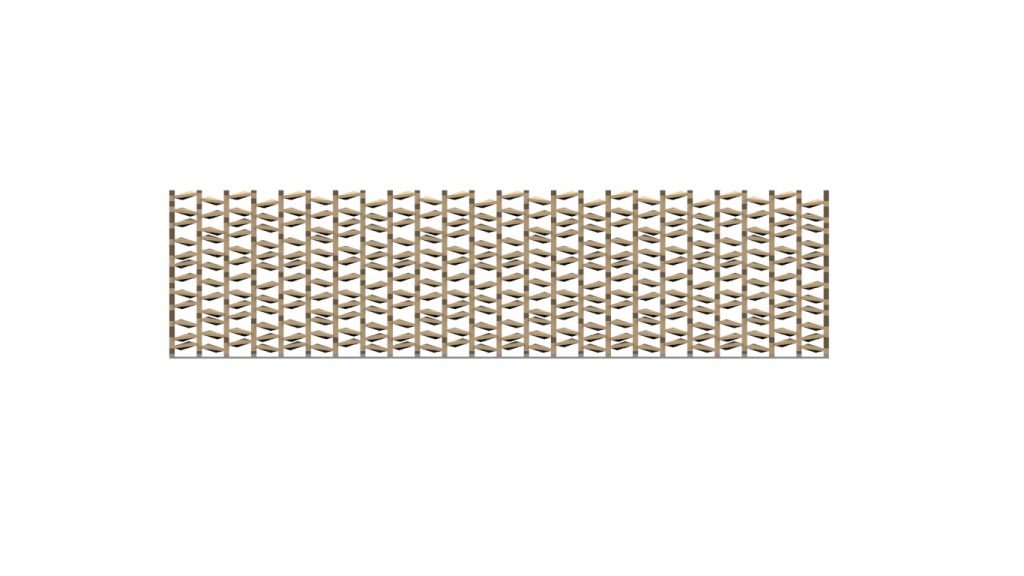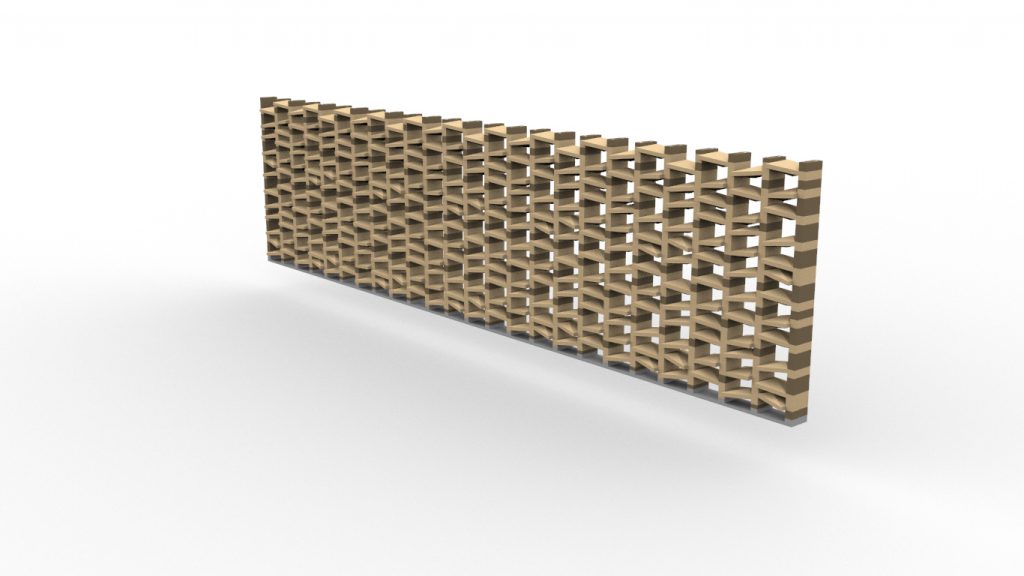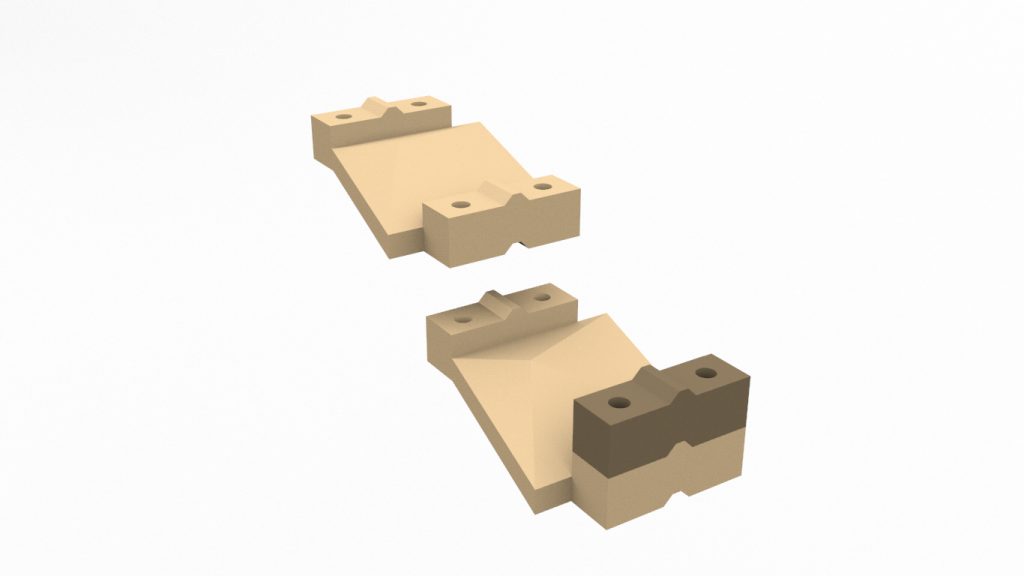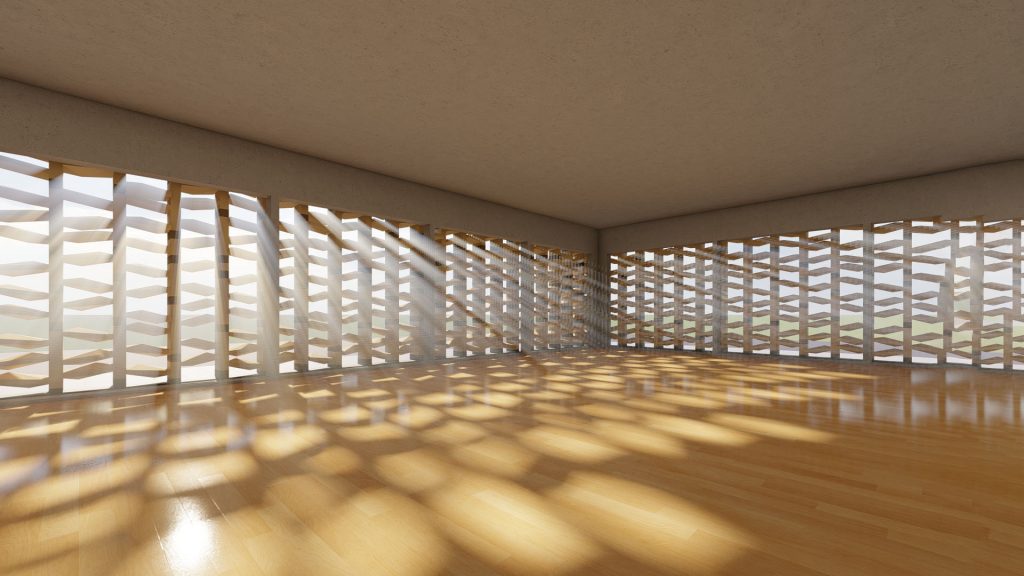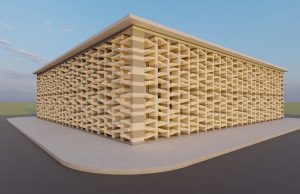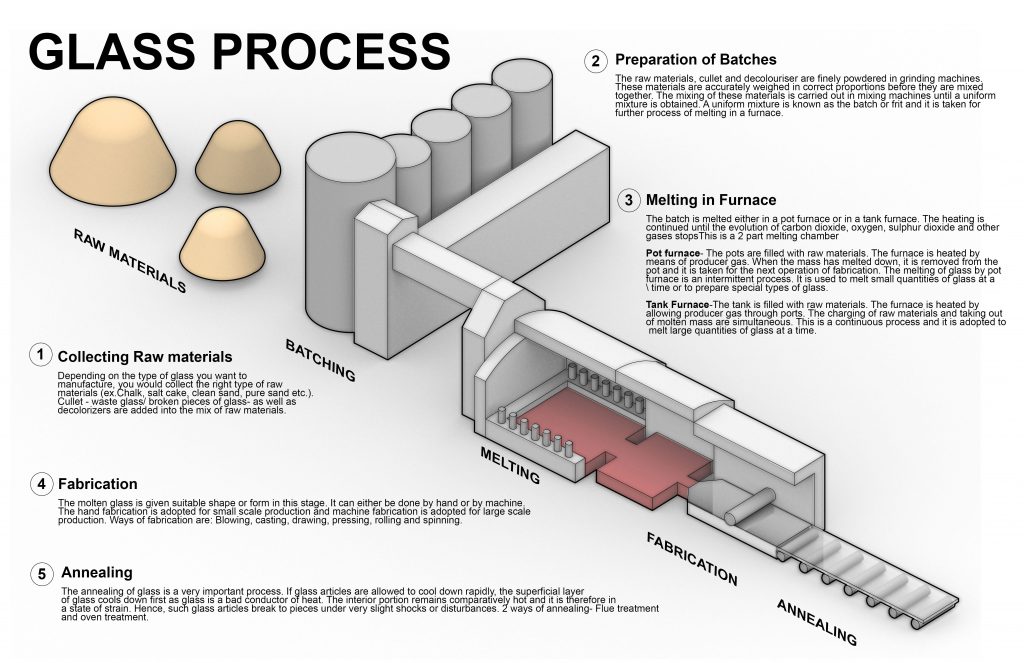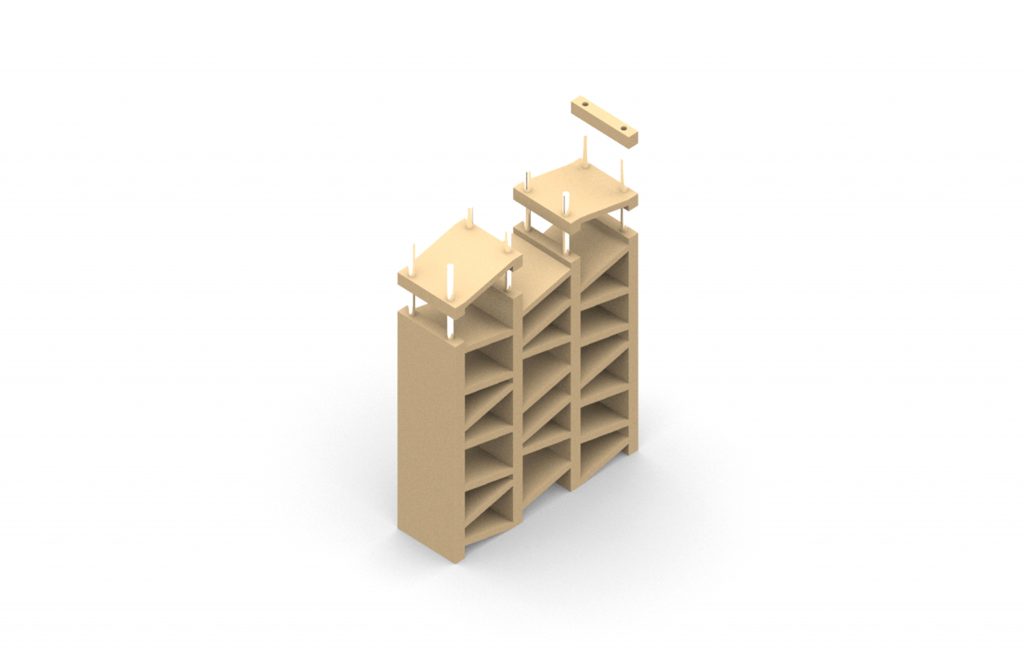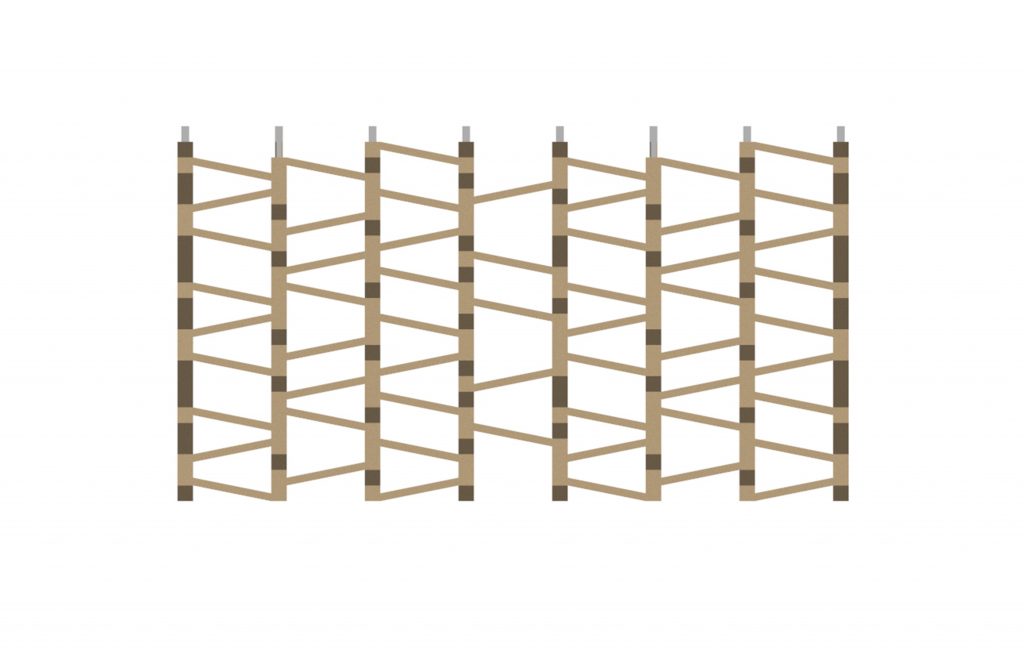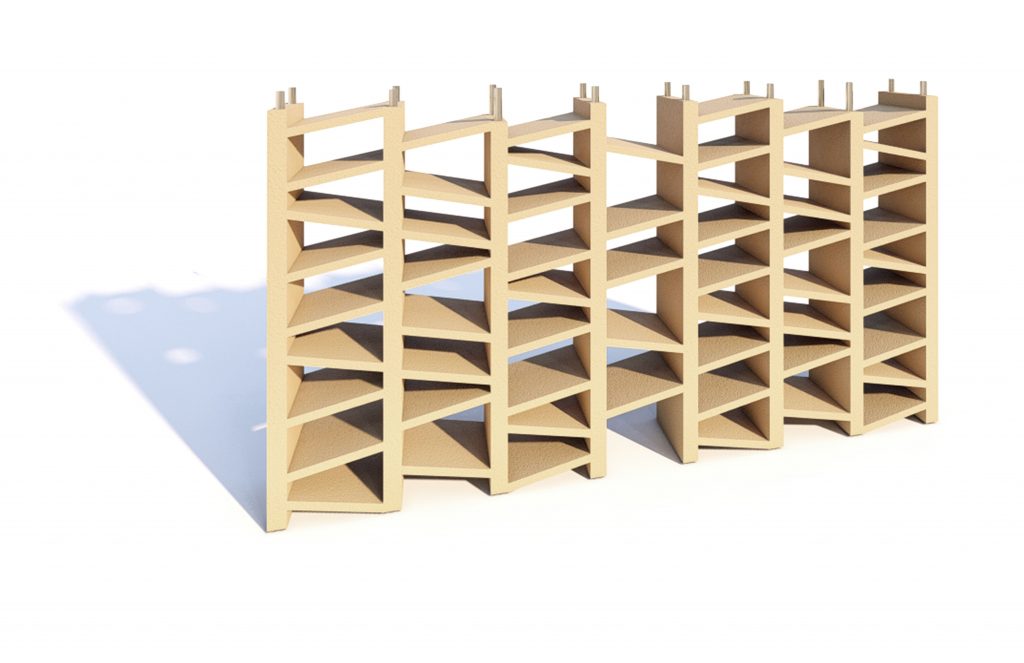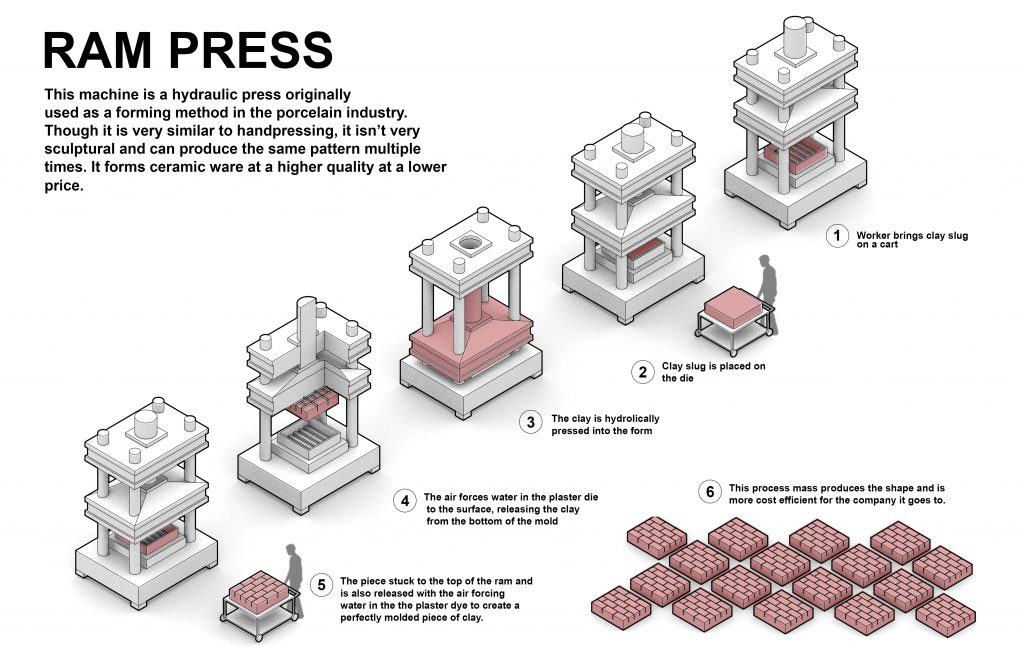Made the tile thinner. The middle is no more than one inch and the ends are two inches.
Perspective, Elevations, and a plan view showing how the tiles would aggregate.
A render of what the terracotta tiles would look like on a portion of the exterior.
This building is a greenhouse for mangrove trees which uses its roots to filter
water and provide habitats for fish. The terracotta rainscreen filters light and
represents the roots of a mangrove.
Tile aggregation on one portion of the building.
Light is filtered through the rainscreen.
Tile design development sketches
Tile mold will be filled in an upright position and modified edges so that the
mold won’t have 90-degree angles
New Tile aggregation: Allows different amounts of sunlight through depending on the arrangement
The tiles are curved in the horizontal direction which allows them to catch rainwater that can flow
onto the tile below.
Rounded the edges so that is easier to get a nicer mold. Also removed holes for the original mounting system leaving only the keystone to keep tiles aligned.
Front elevation showing how the tiles aggregate.
Axon
There are two molds. One for the angled tile and the other is a spacer.
There are two holes for the mounting system and a key so that the tiles
above and below will align.
Interior Render shows how light will pass through the rainscreen.
Exterior Render shows how the angled tiles can create different shadows scattered throughout the rainscreen.
Work cited
http://www.engineeringenotes.com/engineering/glass/how-to-manufacture-glass-glass-manufacturing-process/46790
https://imgv2-1-f.scribdassets.com/img/document/364764996/original/a60ec74ea3/1563509751?v=1
https://2.bp.blogspot.com
